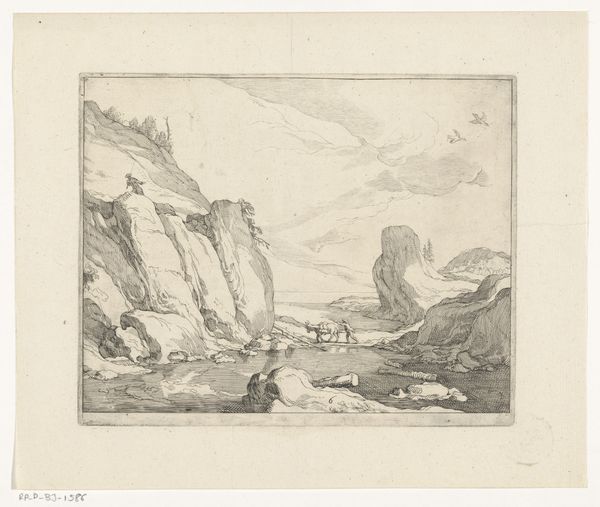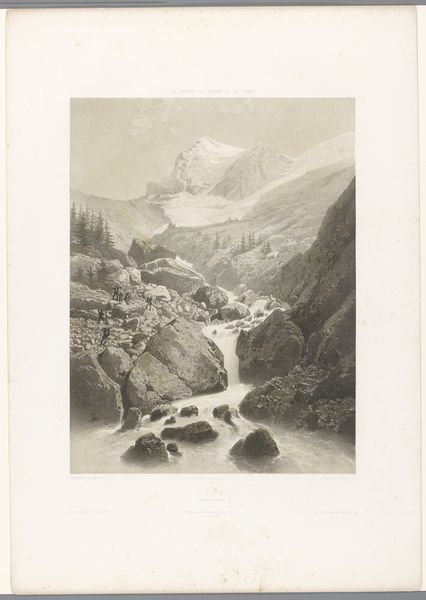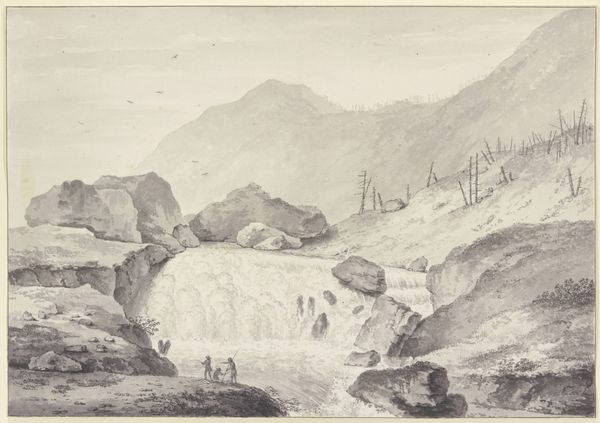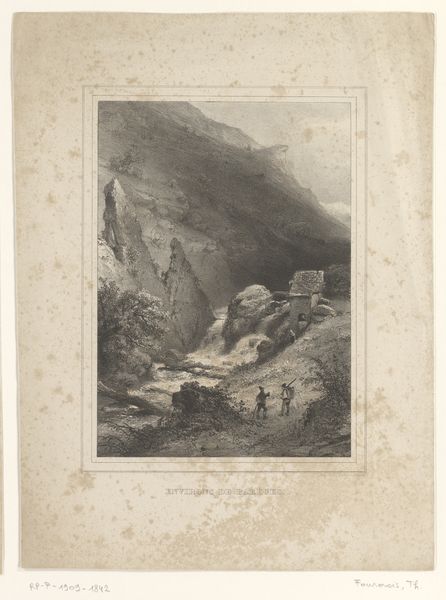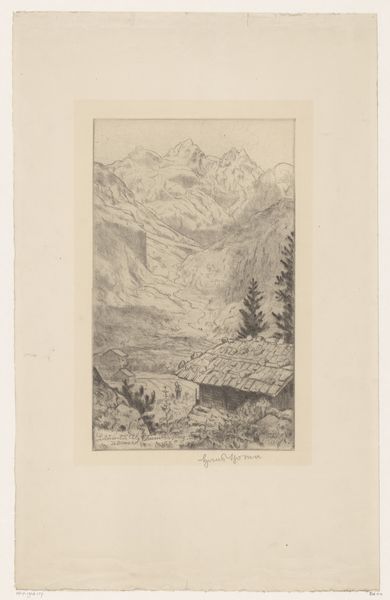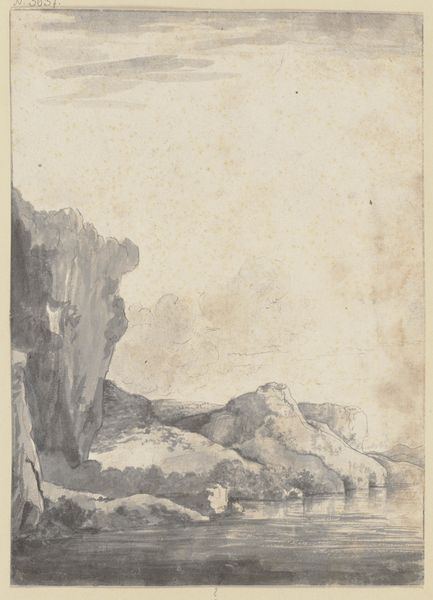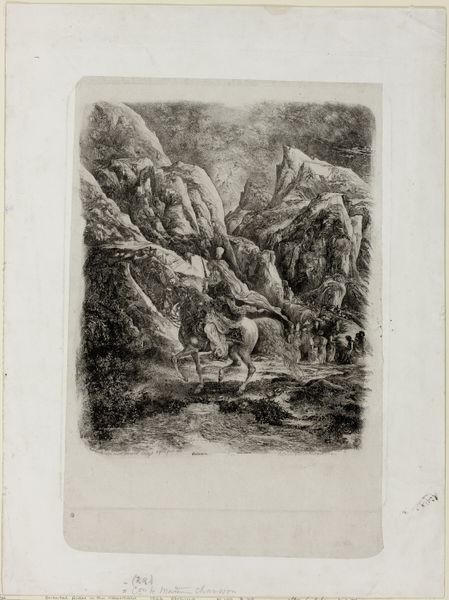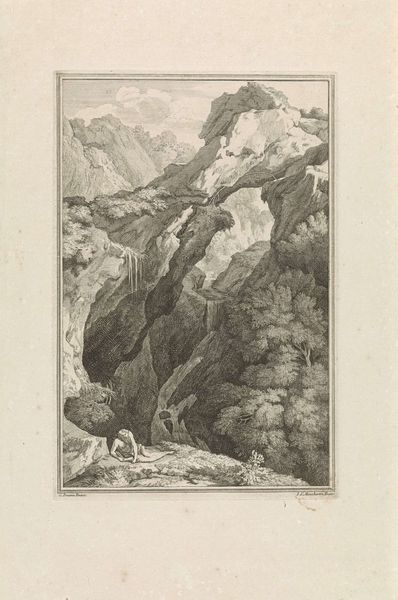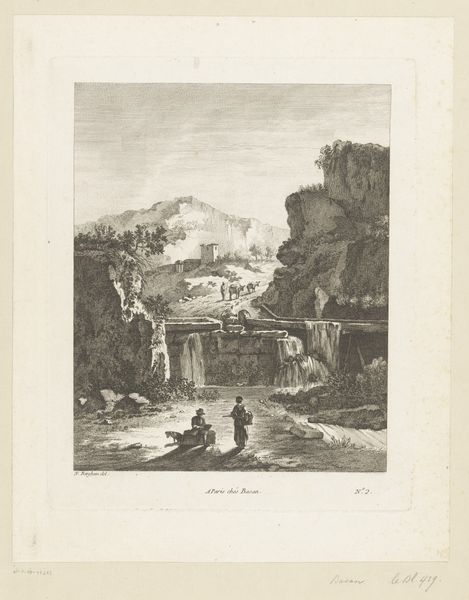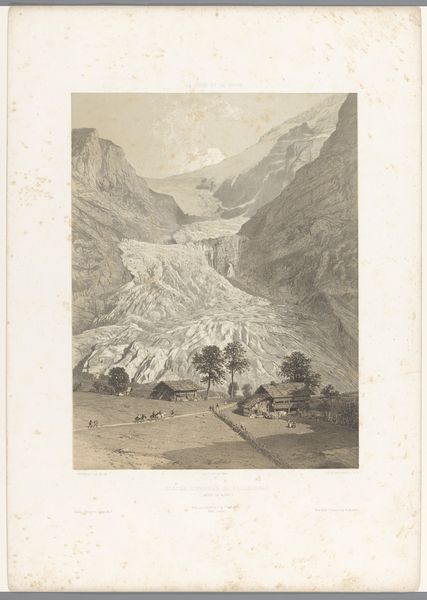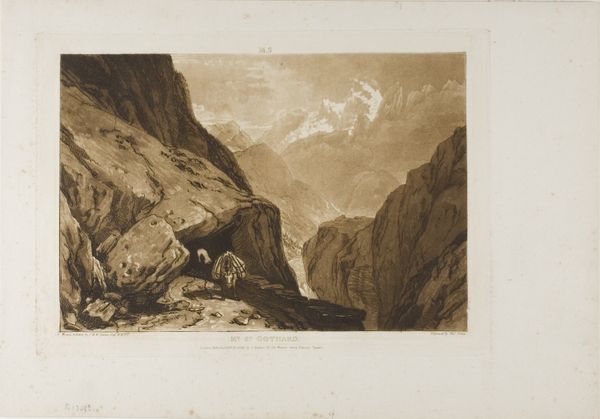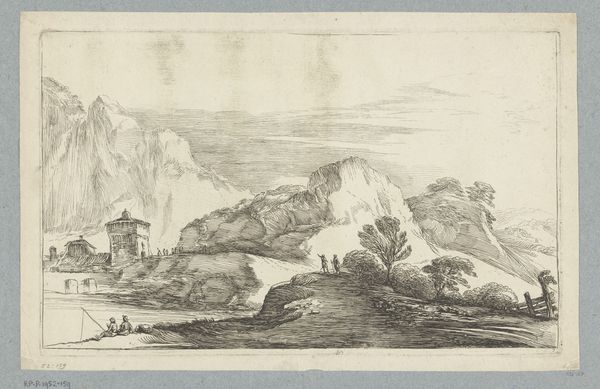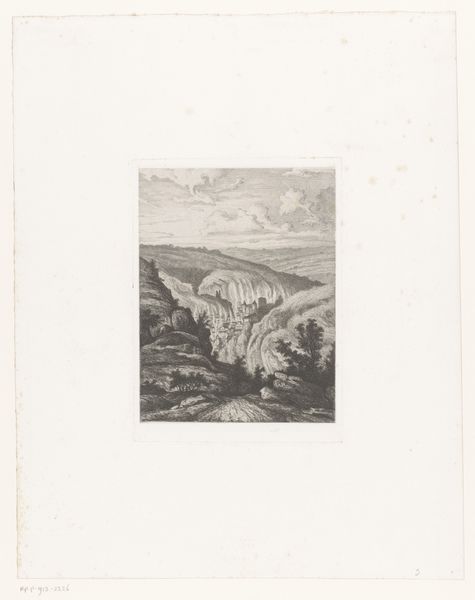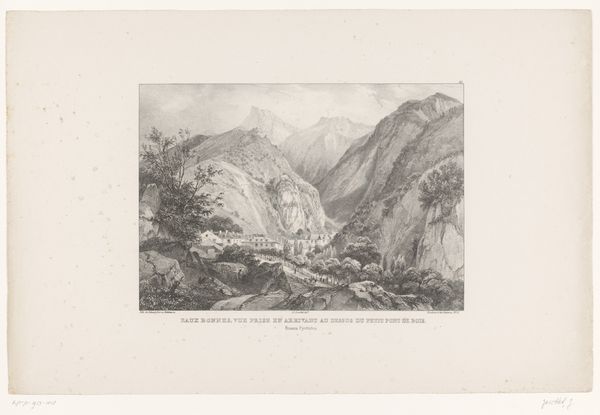
Dimensions: height 566 mm, width 400 mm
Copyright: Rijks Museum: Open Domain
Eugène Cicéri’s lithograph shows the Rhône Glacier in Switzerland as it was seen in the mid-19th century. It portrays both the sublime beauty of nature and the then-fashionable activity of glacier tourism. The image creates meaning through visual contrasts: the solid rocks and the flowing water, the close foreground and distant mountain. The tiny figures atop the glacier emphasize its vast scale while implying humanity’s mastery over nature through exploration and science. This was a time of significant social change in Europe, with industrialization and urbanization transforming landscapes and societies. The Alps, and Switzerland in particular, became a playground for the middle classes. To fully appreciate this lithograph, we need to understand the social and cultural context in which it was made. Travel guides, scientific reports, and other documents can help us understand the changing perceptions of nature and the rise of tourism in 19th-century Europe. Art isn't created in a vacuum.
Comments
No comments
Be the first to comment and join the conversation on the ultimate creative platform.
